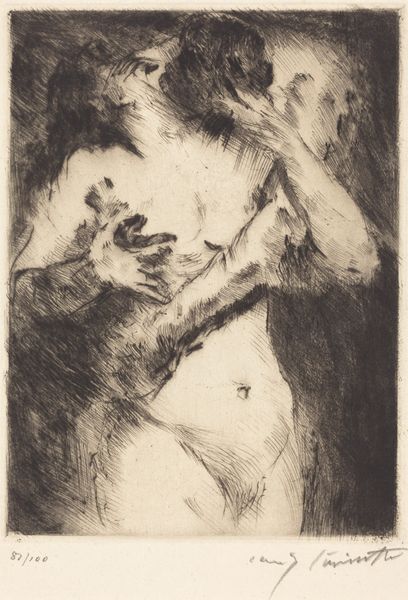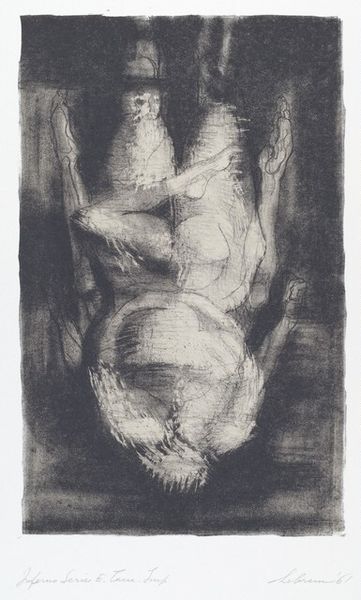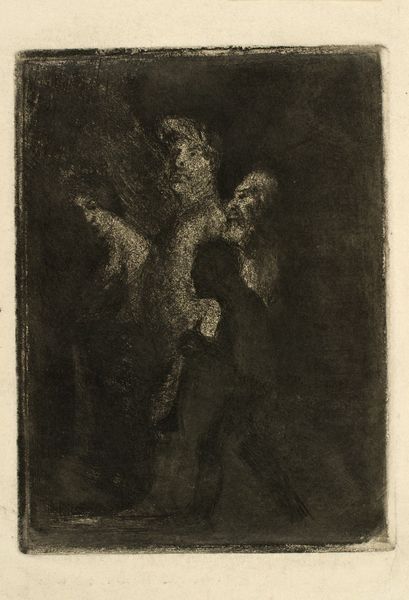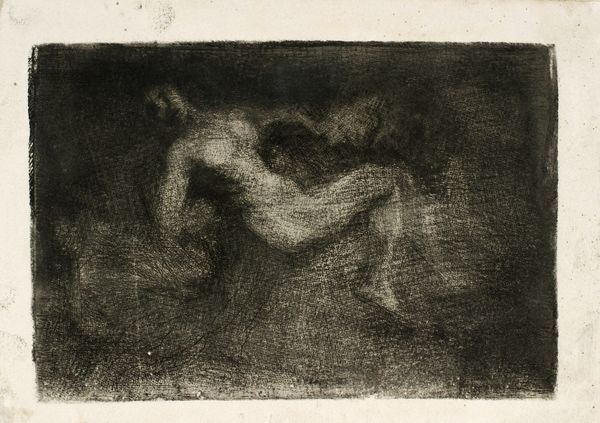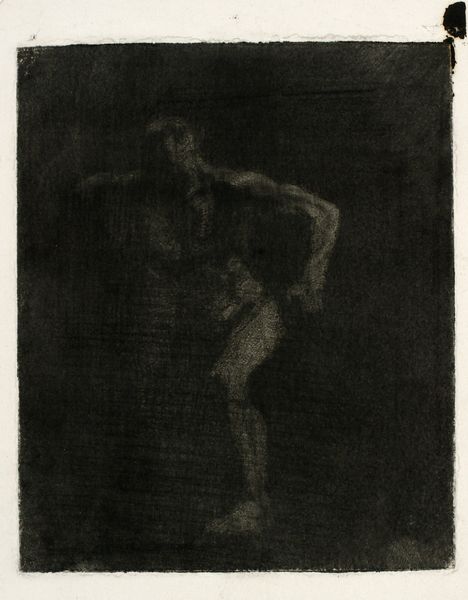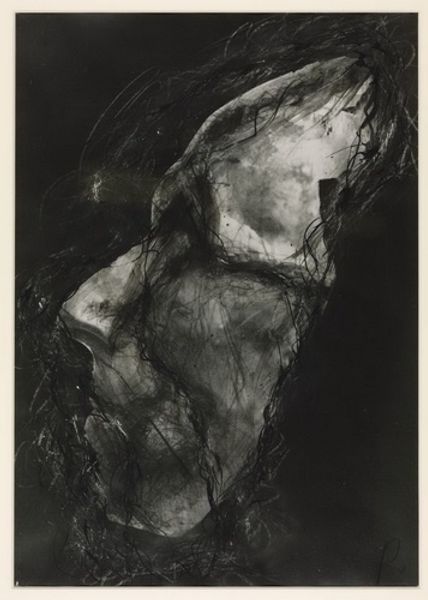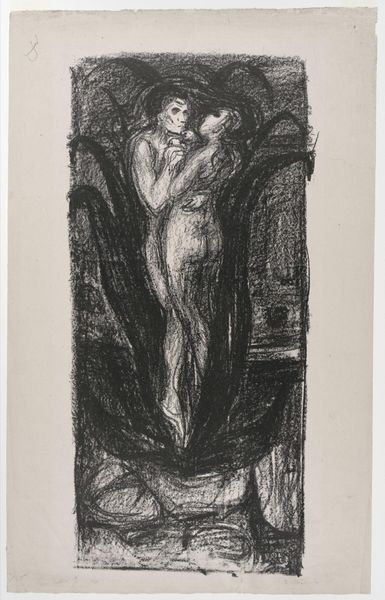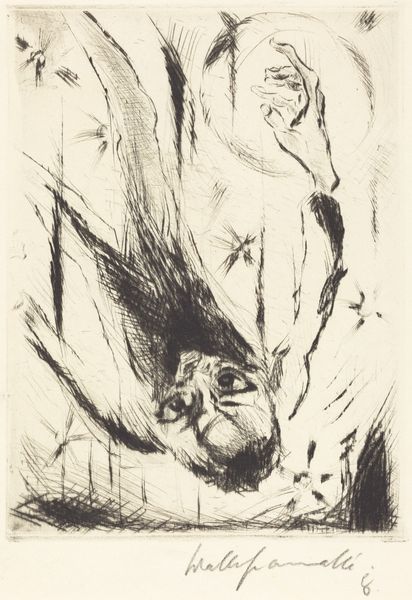
print, etching
#
portrait
# print
#
etching
#
figuration
#
symbolism
Dimensions: 165 mm (height) x 115 mm (width) (plademaal)
Editor: Here we have Oluf Hartmann’s etching, "Two Women and a Man," created in 1903. The shadowy figures and coarse lines give the piece a somewhat brooding feel, and the composition seems rather unconventional. What strikes you about this print? Curator: What I immediately note is the relationship between the figures established solely through their placement and the varying degrees of detail afforded to each. The man dominates the composition by size, yet his face is less defined than the woman on the right. The leftmost figure is almost completely obscured, rendered only through suggestion, leaving the viewer to complete the form. Do you notice how this strategic vagueness influences the affect? Editor: Yes, I think so. The lack of clarity definitely adds to the mysteriousness. It makes me wonder what exactly they are doing or feeling, but the incomplete nature of the image frustrates any concrete narrative. Is it common for symbolist artists to play with clarity in this way? Curator: Indeed. Notice how the varying densities of hatching create depth and shadow, directing the eye. Hartmann is deliberately manipulating our perception, using darkness to conceal and light to reveal specific elements he wishes to emphasize. The content recedes in importance to the act of viewing itself, demanding closer inspection of its constituent elements. It eschews narrative in favor of formal relationships between light, shadow, and form. Editor: I see what you mean. I was so focused on trying to decipher the story that I almost missed how the etching technique and composition contribute to the overall mood. Curator: Exactly. The meaning isn’t necessarily *in* the subject, but in how the subject has been rendered to activate an emotion in the viewer, even one as ambiguous as the "brooding" you noted earlier. Editor: I am so used to seeking symbolism and narrative context, I had forgotten to just see. Thanks. I'll remember to consider composition and texture, rather than just content.
Comments
No comments
Be the first to comment and join the conversation on the ultimate creative platform.
